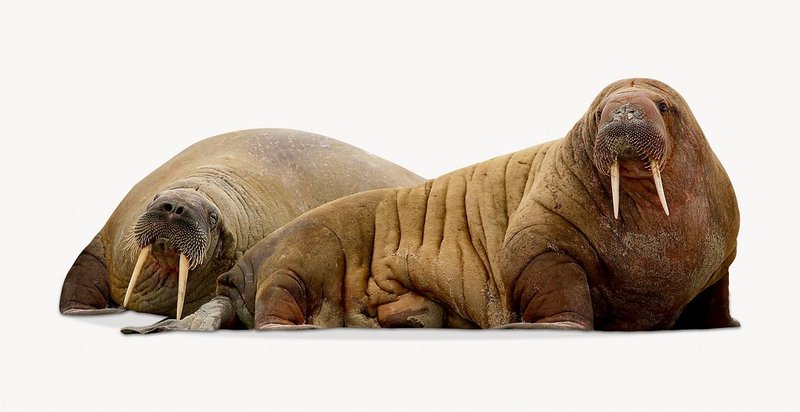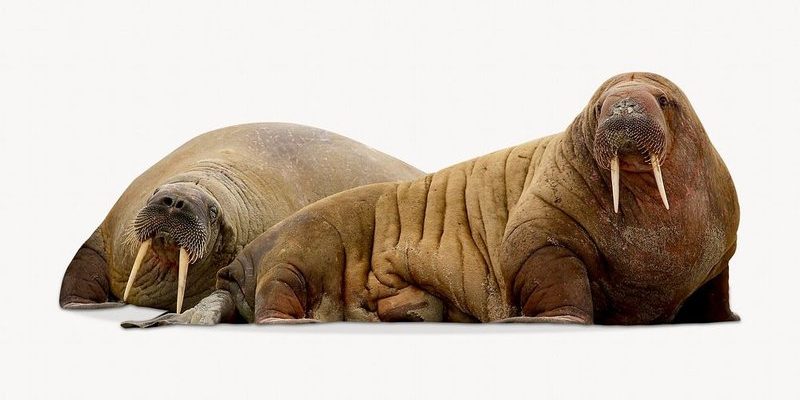
You might be wondering why we should care about walruses. Well, just like a good cup of coffee brings together flavors and aromas, walruses connect different parts of their environment. They help maintain the balance of their ecosystem, and understanding their role can shed light on broader environmental issues. So, let’s dive into the fascinating world of walruses and explore how they impact marine ecosystems.
Walruses: A Quick Overview
Before we delve deeper, let’s get to know our subject a little better. The walrus is a large marine mammal found primarily in the Arctic and sub-Arctic regions. They can weigh up to 2,000 pounds and reach lengths of around 10 to 12 feet! Their most distinct features are their long tusks, which are actually elongated canine teeth. These tusks serve multiple purposes, from helping them haul themselves out of icy waters to display during mating season.
Walruses are social creatures, often seen in large groups known as herds. They spend much of their time resting on ice or rocky beaches, but they are also skilled swimmers. Their diet mainly consists of benthic invertebrates like clams and mollusks, which they find on the ocean floor. By foraging for food in this way, walruses play a crucial role in the benthic ecosystem, helping to control the populations of the organisms they consume.
The Ecological Importance of Walruses
So, why are walruses so important to their ecosystems? Here’s the thing: they have a huge impact on the environment simply by going about their daily lives. When walruses dive to the ocean floor in search of food, they disturb the sediment and help to release nutrients back into the water. This nutrient recycling is essential for the growth of various marine plants and organisms.
Additionally, walruses are a part of the food web. They are prey for polar bears and killer whales, and their presence in the ecosystem helps support these larger predators. By being part of this food chain, walruses contribute to the overall balance of marine life, ensuring that populations of different species are kept in check.
Walruses and Climate Change
Honestly, climate change poses a serious threat to walruses and their homes. As the Arctic ice continues to melt, walruses face challenges finding suitable resting and breeding areas. When ice platforms diminish, walruses may end up overcrowding on land, which can lead to increased mortality rates, especially among calves.
You might be wondering what this means for the ecosystem as a whole. When walrus populations decline, the ripple effect can be felt along the food chain. Fewer walruses mean less nutrient recycling in the ocean, which can impact fish populations and the broader marine food web. It’s a stark reminder of how interconnected our ecosystems truly are.
Walrus Habitats: Where Do They Live?
Walruses primarily inhabit the shallow coastal waters of the Arctic Ocean and its surrounding seas. Their habitat is unique, consisting of ice floes and rocky shores where they can rest and breed. These habitats provide the perfect conditions for finding their favorite foods.
The availability of ice is crucial for walruses because they rely on it for resting after diving. Without sufficient ice, walruses may struggle to find rest and escape from predators. As they adapt to their changing environment, they may venture further in search of suitable habitats, which can lead to increased encounters with human activity and further stress on their populations.
Human Interaction and Conservation Efforts
Humans have a complex relationship with walruses. While some communities depend on them for food and materials, others pose threats through hunting, pollution, and climate change. Overhunting in the past has significantly reduced walrus populations, but today, conservation efforts are in place to protect these majestic creatures.
Organizations are working tirelessly to raise awareness about walrus conservation. They aim to educate the public about the importance of walruses in marine ecosystems and promote sustainable practices. By supporting local communities and ensuring responsible hunting practices, we can help protect walruses and their habitats for generations to come.
How You Can Help Protect Walruses
You might be wondering, “What can I do to help?” There are plenty of ways you can make a difference! Here are a few simple actions to consider:
- Support Conservation Organizations: Look for local or international groups working to protect marine life and habitats.
- Reduce Your Carbon Footprint: Small changes in your daily life—like using less plastic, conserving energy, and using public transport—can help combat climate change.
- Educate Others: Share what you’ve learned about walruses and marine ecosystems with friends and family. The more people know, the more we can work together for change.
By taking these steps, you can contribute to the protection of walruses and the health of our oceans.
In summary, walruses are much more than just adorable, tusked giants lounging on ice floes. They play a crucial role in maintaining the health of marine ecosystems, from nutrient cycling to serving as a food source for predators. As climate change continues to threaten their habitats, it’s important for all of us to understand their significance and take steps to protect them.
So, the next time you hear about walruses, remember their critical contributions to the balance of ocean life. By working together, we can ensure that these remarkable creatures continue to thrive in our waters, reminding us that every part of the ecosystem, no matter how big or small, matters.

